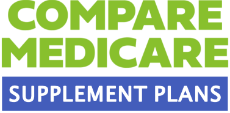Medicare Part B
Medicare is a federal health insurance program that is designed to provide coverage for people in the United States. It consists of four parts – Part A, Part B, Part C, and Part D.
Medicare Part A covers hospital expenses such as inpatient hospital care, skilled nursing facility care, hospice care, and some home health care. This part is usually free for most people since it’s automatically included when you sign up for Social Security or Railroad Retirement benefits.
Part B of Medicare covers medical expenses such as doctor visits, preventive services like screenings and vaccinations, durable medical equipment like canes and walkers, and some mental health services. Those who wish to be enrolled in this part must pay a monthly premium which will depend on their income level.
Part C of Medicare is also known as Medicare Advantage. This option allows individuals to receive all their Part A and Part B benefits through a private insurance company rather than Original Medicare (Parts A and B). Generally speaking, the plans include additional services like vision or prescription drug coverage.
Finally, Part D of Medicare covers prescription drug costs by providing access to a range of different prescription drug plans from private insurers approved by Medicare. These plans are available for an additional premium cost that varies depending on the specific plan chosen by the individual.
Among these four parts of Medicare, Part B stands out due to its inclusion of preventive services such as mammograms, flu shots, and other immunizations that help keep individuals healthy while also potentially preventing serious diseases or illnesses down the road.
What is Medicare Part B?
Medicare Part B is a federal health insurance program for people who are 65 years and older, or disabled. It helps cover medically necessary services such as doctor visits, outpatient care, preventive services, and diagnostic tests. It also covers some home health care and durable medical equipment (DME).
It’s important to understand that Medicare Part B is not a complete solution. Many people often purchase additional coverage or pay some of the costs out-of-pocket to get the full range of benefits available under this program.
Combined with Original Medicare (Part A & B), many people choose to add a Medigap and Prescription drug plan to their coverage to minimize out-of-pocket expenses. Or, they may choose to opt-out of Parts A and B and enroll in a Medicare Advantage plan. These plans generally offer more comprehensive coverage than Original Medicare with additional benefits like vision, dental, hearing aids, and over-the-counter medications.
Medicare Part B Cost
You’ll pay a premium each month directly to the government to be enrolled in Medicare Part B; there are also gaps in coverage such as deductibles and coinsurance or copayments that you will be responsible for. A Medigap plan can help pay most or in some cases all of these gaps.
Overall, Medicare Part B is an important component of the overall health system available in the United States; it provides essential coverage for seniors and disabled individuals who need help paying for medically necessary doctor’s outpatient services.
For those wishing to receive additional benefits beyond what’s offered under Original Medicare, it may be wise to consider purchasing supplemental coverage through one of many private insurers offering Medigap plans designed specifically for those enrolled in Original Medicare plans (Parts A &B).
What does Medicare Part B Cover?
Medicare Part B gives you access to a wide range of outpatient doctor’s services. This includes preventive care such as flu shots, mammograms, and colonoscopies, as well as doctor visits, lab testing, home health care, ambulance rides, and some chiropractic care.
In addition to these services, Part B also covers treatments that may take place in a hospital setting. This includes physician’s services, radiation or chemotherapy for cancer, surgeries, diagnostic imaging, medical equipment, and dialysis for failing kidneys.
Medicare Part B will also cover the cost of drugs administered in a medical setting such as various injections or infused drugs and many others including insulin from a pump. Prescription drugs are typically covered under Medicare Part D.
Medicare Part B is not mandatory, however most people do enroll in both Parts A and B, and approximately half the people enrolled in Original Medicare choose to also enroll in a Medigap plan to help cover expenses not covered.
See rates in your area!

Medicare Part B Premium 2023
Medicare Part B is an important part of the Medicare program that covers medical services such as doctor visits, laboratory tests, durable medical equipment, and other outpatient care.
It also helps cover some preventive services to help maintain your health and prevent illness. For most people enrolled in Medicare Part B, there is a monthly premium payment that is required for coverage.
The amount of the Part B premium varies from year to year and depends on various factors including your income, the number of people in your household, and when you enrolled in Medicare. Generally speaking, most people enrolled in Part B will have a standard premium rate of $164.90 each month.
However, if your modified adjusted gross income (MAGI) is above certain thresholds then you may be required to pay an Income-Related Monthly Adjustment Amount (IRMAA).
Part B premiums are typically taken out of Social Security benefits if you are receiving them or can be paid directly by check or through automatic payments made from a checking or savings account. If you are paying directly with checks or money orders these should be mailed to the address specified on the bill along with a completed form CMS-500B – Authorization Agreement for Preauthorized Payments.
Medicare Part B Deductible
In addition to the Medicare Part B premium, Medicare requires its enrollees to meet a deductible before coverage kicks in for most services received under Part B (though there are exceptions for some preventive care). The amount of this deductible changes each year but is generally around $230 per year.
Overall, Medicare Part B premiums are an important part of the core Medicare package that helps protect individuals against many healthcare costs not covered by other insurance plans such as private health insurance policies. Although most people will have to pay this premium each month it does help provide coverage for necessary medical services that would otherwise be very expensive without it.
Medicare Part B Deductible 2023
The Medicare Part B deductible is $226 for 2023.
This amount applies to all Medicare-covered outpatient services, such as doctor’s fees, lab tests, outpatient surgeries, durable medical equipment, and physical therapy visits. Once the deductible has been paid, then Medicare will begin covering 80% of any eligible services provided within that calendar year.
If an individual reaches their maximum out-of-pocket costs before the end of the year, they will not have to pay their Part B deductible again until the following year.
In addition to the annual deductible, there may be additional costs associated with receiving certain services. An enrollee is required to pay 20% of the total cost after the deductible has been met and after Medicare Part B pays 80%.
Medicare Part B While traveling out of the United States
It’s important to understand how your Part B coverage works when you travel outside of the United States. Generally speaking, your coverage does not apply outside of the U.S., unless you are traveling in one of its territories or commonwealths (Puerto Rico or Guam). Additionally, some insurance companies offer supplemental plans that can help cover any health expenses incurred overseas; however, it’s essential you check with your provider in advance since these policies may vary significantly between providers.
Finally, it’s always important to understand what your coverage includes so you can best prepare yourself financially if you need medical care – which is why understanding how Medicare Part B works is so important for those who rely on it for healthcare coverage.
Whether you just turned 65 or have had Part B insurance for many years now, it’s essential to make sure you understand the requirements of your policy including what’s covered under it and what deductibles must be paid before they can access these benefits.
Medicare Part B Enrollment
Enrolling in Medicare is a straightforward process for most people. Typically, individuals enroll in Medicare through the Social Security Administration (SSA).
The online application at SSA.gov is the quickest and easiest way to apply, taking less than 10 minutes to complete. It’s available 24/7 and allows you to sign up for both Medicare Part A and Part B.
If you prefer not to apply online, you can call Social Security at 1-800-772-1213 (TTY 1-800-325-0778) Monday through Friday from 7 AM until 7 PM.
When applying for Medicare through Social Security, you’ll need your date and place of birth, Medicaid number (if applicable), and current health insurance information including employment start/end dates
For anyone who worked for a railroad, the Railroad Retirement Board manages your Medicare enrollment. To enroll, you can call them toll-free at 1-877-772-5772.
Also, you may call 1-800-MEDICARE (633-4227) to help get any questions answered.
When Can you be Automatically Enrolled in Medicare?
Medicare enrollment is automatic for some individuals. If you began collecting RRB or Social Security retirement benefits at least 4 months before turning 65, you will be enrolled in Medicare automatically.
If you live outside of the U.S., such as in Puerto Rico or the Virgin Islands, you’ll be automatically enrolled in Part A but not Part B. Additionally, if you received RRB or Social Security disability benefits for 24 months, you’re automatically enrolled in month 25.
Those who have been diagnosed with amyotrophic lateral sclerosis (ALS), also known as Lou Gehrig’s disease, are eligible for immediate Medicare coverage. If you qualify due to an ALS diagnosis, you’ll be automatically enrolled in Medicare the same month your disability benefits begin.
It’s important to note that while automatic enrollment may apply to some individuals, others will need to enroll themselves through the Social Security Administration or Railroad Retirement Board. If you have questions about your eligibility or enrollment status, contact Medicare directly at 1-800-MEDICARE (633-4227) or TTY 1-877-486-2048.

